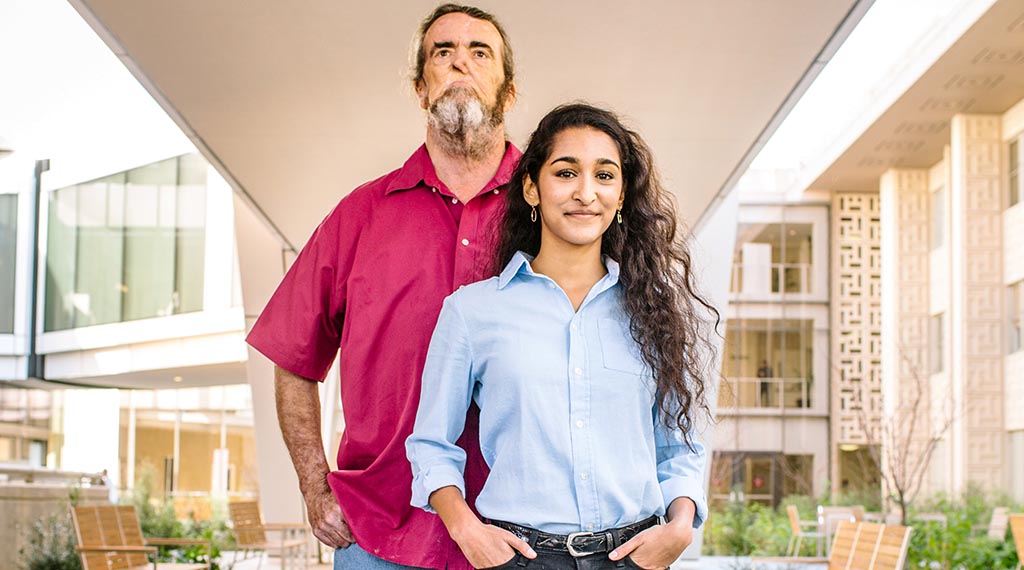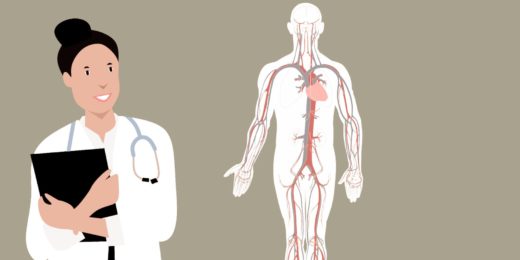As I was chatting with patient volunteer Michael Furze at the fountain near Stanford Hospital, a young woman with long, wavy hair and a big smile walked up and gave him a hug.
It was Tara Murty, a second-year MD-PhD student. A year earlier, she and Furze had been assigned to each other, randomly, in a course called Walk With Me. For the class, medical and physician assistant students are paired with patients to learn about life with a chronic or serious illness.
The three of us were meeting so I could interview them for my Stanford Medicine magazine story about Walk With Me. The yearlong class had ended months earlier; Murty and Furze were no longer required to meet with each other, but they had developed a friendship and kept up the monthly visits.
When they meet, one of them hands over a journal to the other. In the clothbound book, they pen their memories and reflections:
Cancer treatment has been long and hard, using up lots of my time. Doctors and hospitals have eaten up time and energy, leaving little time for building new memories to cherish," Furze writes.
They describe their journal as a "sort of co-memoir" in which they respond to each other's entries.
Would he have imagined his life would be like this? Would he be surprised at the way he has shaped Stanford Medicine? How has he shaped me as I am becoming a doctor?" Murty writes.
Walk With Me -- now in its third year -- was started partly because students were asking to interact with patients early in their education, said Erika Schillinger, MD, associate chief for medical education. Traditionally, in medical and physician assistant school, students complete science courses before they meet patients.
The educators also wanted to nurture empathy in students early, and to help them understand the experiences of people who have a serious disease. "We want our students to have an appreciation for the whole of a patient's life, not just their illness," Schillinger said.
Furze, a retired programmer, learned about Walk With Me as a Stanford patient council volunteer. He signed up because he wanted to help influence the next generation of physicians and physician assistants. Murty, he said, "has shown me that my experience is of value to people who are learning how to be a doctor and healer."
Murty decided to take the course to gain insights about patient care. "I've learned that some of the best care doesn't have anything to do with knowledge," she said. "It's just about listening and respecting a patient's concerns."
What Murty didn't expect was to find a friend. "I thought it'd just be a learning experience," she said. "But it's been such a joy to have a friend in Michael."
Photo by Timothy Archibald






